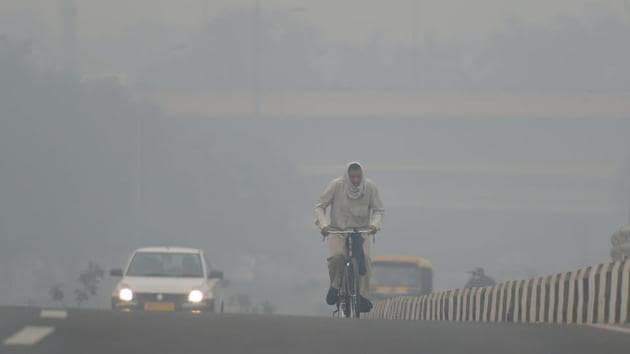Indian students bag US award for developing innovative app to check air quality index levels
A team of Delhi-based engineering college students has won a competition by US’ prestigious Marconi Society for developing an innovative mobile application that estimates the quality of air in one’s neighbourhood by analysing the images taken by a smartphone camera.
A team of Delhi-based engineering college students has won a competition by US’ prestigious Marconi Society for developing an innovative mobile application that estimates the quality of air in one’s neighbourhood by analysing the images taken by a smartphone camera.

The application developed by Tanmay Srivastava, Kanishk Jeet and Prerna Khanna of Bharati Vidyapeeth’s College of Engineering won the top spot in the contest organised in India under the Celestini Program, supported by the Marconi Society, according to an official release issued by the Mountain View, California-based Marconi Society.
The Celestini Program, named for the hill in Italy where Guglielmo Marconi conducted his first wireless transmission experiments, is run by winners of the Society’s annual Young Scholar Awards, who work with technical undergraduate students in developing countries, to use technology to create social and economic transformation in their communities, it said.
The winning team, which won USD 1,500 for their solution, developed an inexpensive, portable and real-time air quality analytics application: Air Cognizer. In this, a user uploads an image taken outdoors with half of the image covering the sky region.
“Using image processing techniques, features are extracted and the machine learning model estimates the Air Quality Index (AQI) levels for the user’s location. The machine learning model is deployed on smartphones using Tensorflow Lite and Machine Learning (ML) Kit from Google,” the release said.
An Android app of the same name is available at Google Play. “Air Cognizer is simple to use and free -- and will prove to be very useful for citizens in cities like Delhi, where air pollution is particularly acute now,” the Marconi Society said.
In India, the Celestini Program was started in 2017 in partnership with IIT-Delhi by Aakanksha Chowdhery, an ML Engineer with Google AI, who was selected as a Marconi Young Scholar in 2012 for her work in high-speed last-mile internet connectivity.
The other IIT-Delhi partners include Prof Brejesh Lall and Dr Prerana Mukherjee.
So far, 14 students have been hosted in India under this programme. In 2018, the second year of the Program in India, three teams from over 100 applicants were selected to work during the summer at IIT-Delhi on problems related to air pollution and road safety in New Delhi, the release said.
The second prize went to the team of Divyam Madaan and Radhika Dua, from UIET Chandigarh, Punjab University.
They created a website that forecast air pollution levels in Delhi over the next 24 hours using advanced machine learning techniques such as Long Short Term Memory (LSTM) to predict the major pollutant and its cause (for example, road traffic, industry emissions, or agricultural wastes) in every location based on historical data.
The website prototyped by the students updates in real-time using Google Cloud platform and Cloud ML engine.
The team that secured the third spot was also from Bharati Vidyapeeth’s College of Engineering. It included Sidharth Talia, Nikunj Agarwal and Samarjeet Kaur. They prototyped a low-latency platform to transmit vehicle-to-vehicle alerts about potential road safety hazards or collisions using computer vision techniques on Raspberry Pi and Xbee radio modules.
(This story has been published from a wire agency feed without modifications to the text. Only the headline has been changed.)












